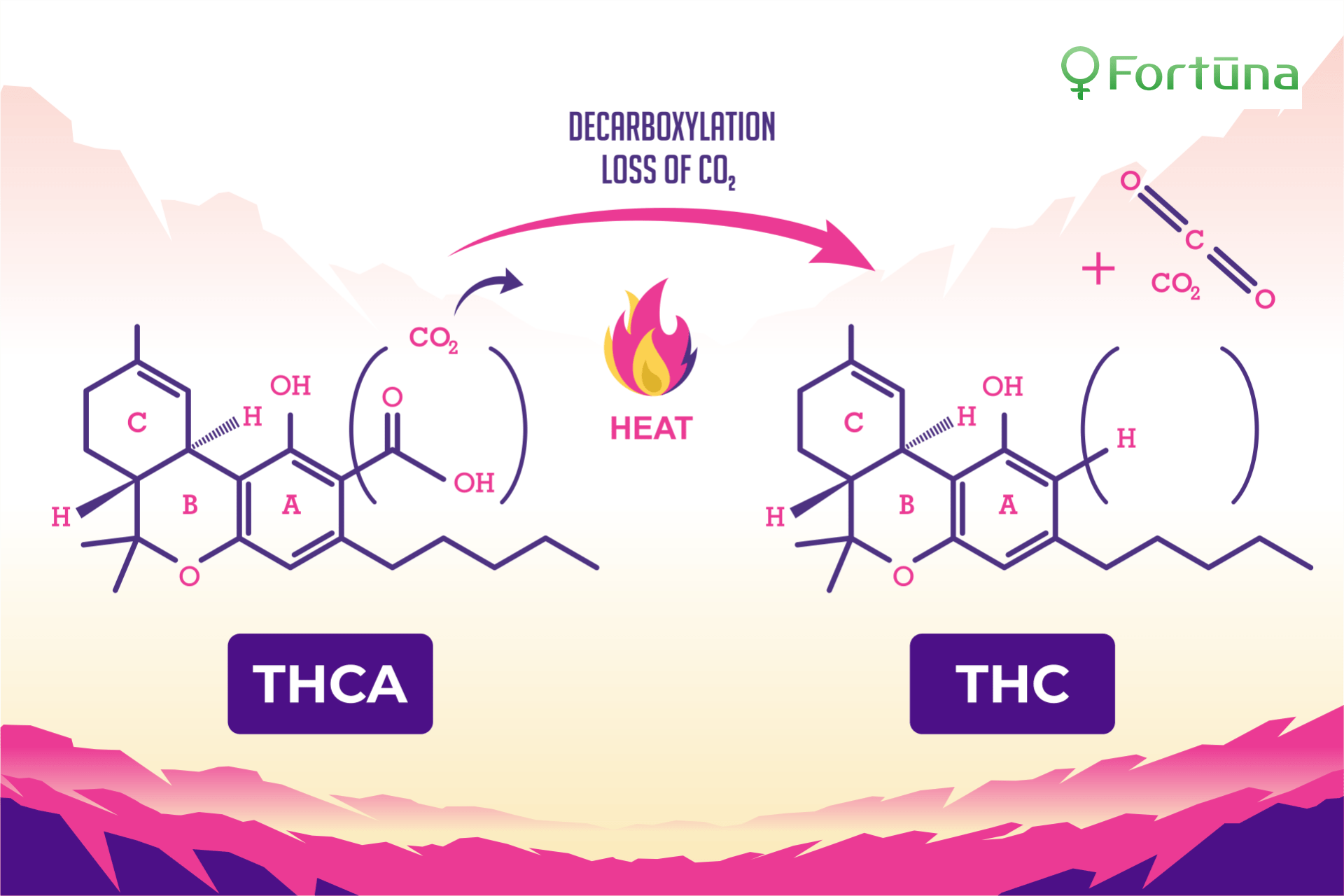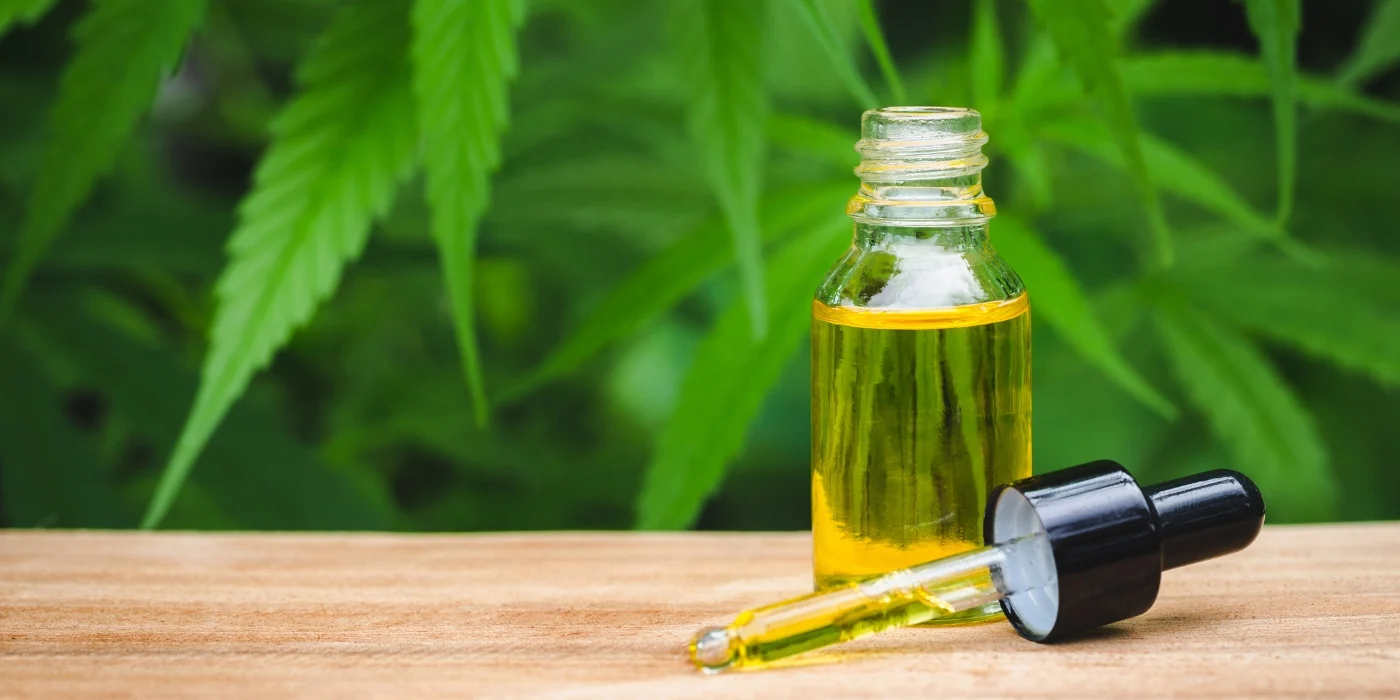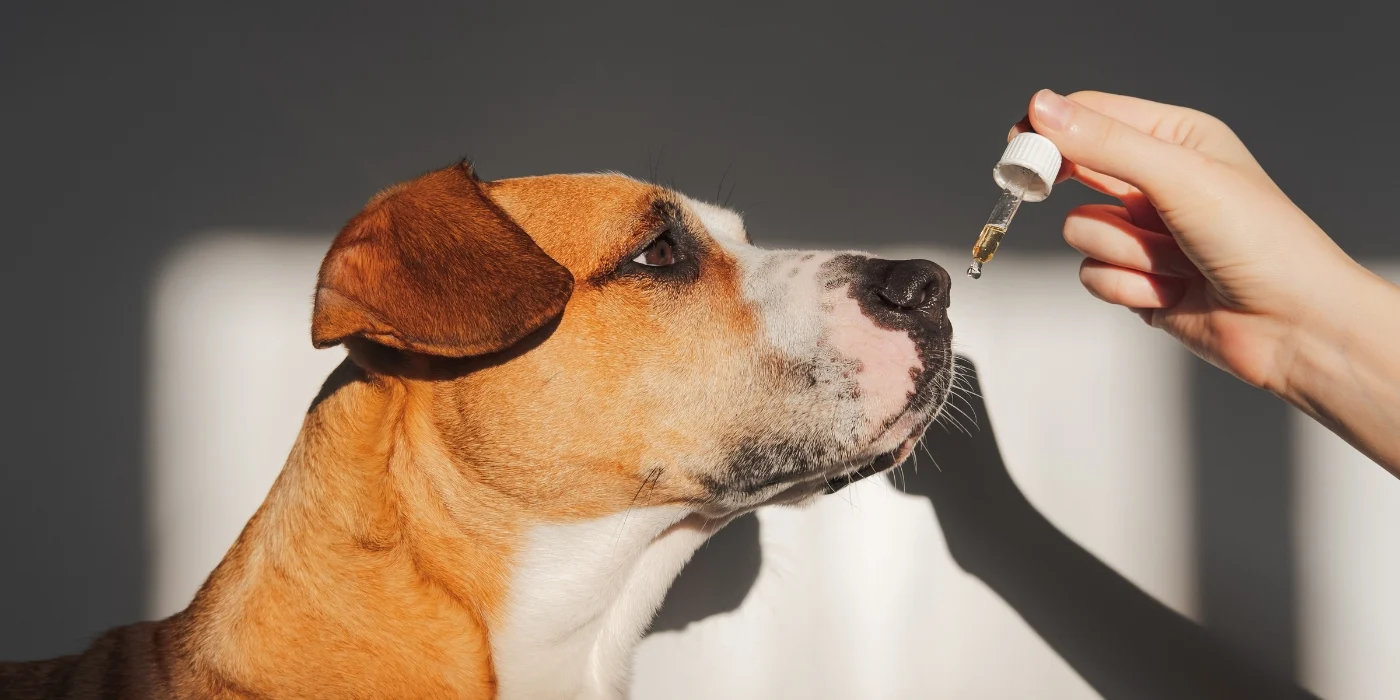
- CBD
-
by gu
Hemp decarboxylation is an important consideration when determining the concentration of THC in hemp. Let’s explain.
Hemp contains numerous raw cannabinoids, which are variations of the most common cannabinoids that we typically hear about. Raw hemp does not cause any kind of psychoactive experience, though. For instance, if you add raw hemp leaves to your salad, you wouldn’t feel any psychoactive effects. Why? Because those cannabinoids have not been “decarbed” prior to consumption
The process of decarboxylation usually involves exposing the cannabinoids to heat or light, which inherently changes the chemical structure of them. This unlocks the once sleeping psychoactive potential of THC and makes it an active side effect.
For instance, the metabolic precursor to THC (the cannabinoid famous for getting people “high”) is THCa. However, THCa in and of itself doesn’t have any psychoactive abilities. Once exposed to heat, though, the chemical composition changes allowing it to directly affect a person’s endocannabinoid system and incur psychoactive effects.

Decarboxylating Hemp to Determine Real THC Levels
To accurately determine the amount of THC in hemp (and to confirm that it is legally compliant), the plant must be tested to measure the cannabinoid level. Because hemp tests occur during growth, they must be tested before hemp is decarboxylated. To determine THC levels pre-decarboxylation (a.k.a. “total potential THC”), use the following formula.
[THCa x 0.877] + [delta-9 THC] = Total Potential THC
Raw Hemp Cannabinoids Pre-Decarboxylation
Raw hemp cannabinoids actually have some pretty amazing health benefits themselves. These are some of the most common raw cannabinoids and their health benefits:
THCa (TETRAHYDROCANNABINOLIC ACID)
THCa is the cannabinoid precursor to THC. It can not convert into THC unless it is dried and heated up (i.e. decarboxylated). Until it goes through the decarboxylation process, though, THCa is non-psychoactive. Regardless, THCa possesses some pretty impressive therapeutic potential including:
- Anti-inflammatory properties
- Reduces nausea and stimulates appetite
- Neuroprotective properties
CBDa (CANNABIDIOLIC ACID)
Similar to the THCa/THC relationship, CBDa is the forerunner to CBD. CBDa also has to go through the decarboxylation process before it turns into CBD.
Preliminary research shows that some of the potential health benefits associated with CBDa include:
- Reduction or elimination of seizures
- Inhibition of cancer cells
- Helps reduce nausea
- Antidepressant properties
CBGa (CANNABIGEROLIC ACID)
CBGa performs a protective function for cannabis. It is produced in the plant’s trichomes and it triggers targeted plant cell necrosis for natural leaf pruning. This allows the plant to maximize energy directed toward the flower.
CBGa may also convert to CBG, but in a majority of strains, CBGa eventually converts into either THC or CBD.
Research has shown that some of its health benefits could positively affect people dealing with cardiovascular disease, metabolic disorders, colon cancer, and more.
Why Hemp Decarboxylation is Important
According to Synergistic Energy Associates, the two key elements to decarboxylation are heat and light. “Cannabinoids are converted into their neutral forms upon heating or exposure to light. Depending upon the end product, processors may choose to decarboxylate cannabis plant material before or after the extraction.”
The chemical composition of raw cannabinoids has an extra carboxyl ring or group attached to their chain. Decarboxylation removes a carboxyl group and releases carbon dioxide, allowing the cannabinoid to become “activated” and ready to deliver the desired medicinal properties of cannabis to the final product.
Hemp decarboxylation also improves cannabinoid extraction. Research shows that moisture content in the plant can have negative impacts on extraction yields. Water makes the extraction process slower and less efficient because it interacts with the solvent and affects the flow during extraction.
If you heat the material prior to extraction, the water is removed from the plant and increases extraction efficiency.
In addition to this, neutral THC and CBD are more soluble than their more acidic counterparts, THCA and CBDA. This makes the extraction with non-polar solvents more effective at capturing cannabinoids and having higher extraction yields.
The two most commonly known decarboxylated cannabinoids are THC and CBD.
THC, while most widely known for its psychoactive effects, offers many potential therapeutic benefits including relief from pain, anxiety, nausea, insomnia, and a lack of appetite. Likewise, CBD may help treat many conditions like seizures, inflammatory bowel disease, depression, inflammation, migraines, anxiety, and more.
Final Thoughts About Hemp Decarboxylation
Decarboxylation is the process of heating cannabinoids to activate their different potential health benefits. It also makes for easier and more effective extraction. But perhaps most importantly, hemp decarboxylation reveals the actual THC levels in hemp rather than “total potential THC”, which is important considering the unpredictability of THCa (i.e. whether or not it will actually convert to THC).
Contact us to learn more about the importance of hemp decarboxylation and the hemp cultivation process.



